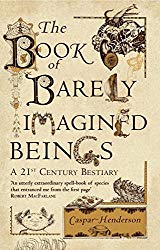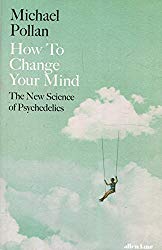Nature has long been something to fear; in ancient literature, our distant ancestors personified it as monsters and fought it, from Scylla to Beowulf. Nudity and bodily fluids such as menstruation are still taboo in most cultures. Paradoxically, nature is also something we love and regard as sacred; we can’t afford to lose it, so we fence off green spaces and cultivate gardens. If we image a future post the climate crisis, it looks bleak and dystopian.
Historically, nature has been a place individuals go to seek creativity and wisdom. A period of reclusion in the mountains or woods was considered vital for artists, writers and spiritual practitioners of the past. Solitude is still a catalyst for innovation. We often talk about re-connecting with nature, as if it were something separate to us. But we are nature. In literature, leaving civilisation and stepping out into the wilderness presents an opportunity for the hero to re-connect with themselves and their true nature—or something akin to the divine. Many cosmologies have myths that emphasise humans are part of the natural world, not its masters, and this is reflected in their consumption habits as moderation. Today in Western culture, we are in need of new stories to repair this relationship. We are taking too much and as a consequence endangering organisms that enrich our lives, or the resources on which we depend for our own survival. In other words, in harming nature, we are harming ourselves.
Here are some reading suggestions for learning more about our place in the natural world.
Often considered the world’s oldest surviving great work of literature, this epic poem from Ancient Mesopotamia tells the story of Gilgamesh, a young king who fights against monsters sent by the gods, and goes on a quest to seek immortality. He eventually must come to terms with nature and the inevitability of death—and in turn becomes a good king. We encounter along the way a parallel to the Hebrew Bible’s Garden of Eden, in the Garden of the Gods. Enkidu and Shamhat are made by a god and live in harmony with plants and animals. Endiku, like Adam, is introduced to a woman (always the scapegoat) who tempts him, Shamhat, like Eve. In both stories, a man accepts food from a woman, becomes ashamed of his nakedness and covers it, and must leave the garden, unable to return. On leaving the Garden of Eden, or the Garden of the Gods, harmony was lost. Nature became something terrifying to be fought. This story is the first to play with this dichotomy, the wilds versus civilisation, and shows that the Utopian dream of living harmoniously with nature existed pre-Abrahamic religions, and was not a reality for Ancient Pagans.
1491: New Revelations of the Americas Before Columbus by Charles C. Mann
The idea that Native Americans lived in harmony with a pristine natural world as simple hunter-gatherers is an enticing one, but it is not altogether true, according to Mann. The issue with resorting to the “Nobel Savage” trope is that some communities were environmental stewards, others weren’t—and for the most part, the situation was more complex than that. “The Maya collapsed because they overshot the carrying capacity of their environment,” he writes. “They exhausted their resource base, began to die of starvation and thirst, and fled their cities en masse, leaving them as silent warnings of the perils of ecological hubris.” Before the European colonisation of the Americas, Native Americans actively moulded the land around them, though their methods were more sustainable than that of the colonisers, who swiftly wiped out species that had been around for thousands of years. There is evidence that 70-80 percent of the Amazon forest was grown by humans. The complexity of societies Pre-Columbus was comparable to Eurasian counterparts. “In 1491 the Inka ruled the greatest empire on earth. Bigger than Ming Dynasty China, bigger than Ivan the Great’s expanding Russia, bigger than Songhay in the Sahel or powerful Great Zimbabwe in the West Africa tablelands, bigger than the cresting Ottoman Empire, bigger than the Triple Alliance (as the Aztec empire is more precisely known), bigger by far than any European state, the Inka dominion extended over a staggering thirty-two degrees of latitude—as if a single power held sway from St. Petersburg to Cairo.”
Gathering Moss: A Natural and Cultural History of Mosses by Robin Wall Kimmerer
Drawing on her experiences as a mother, scientist, and writer of Native American heritage, Robin Wall Kimmerer invites us to look closer at something we normally don’t see: the mosses that carpet our temperate forest floors. Part memoir, part scientific treatise, Kimmerer shows us that we have much to learn from these inconspicuous organisms, and in turn the natural world as an interconnected web of which we are part. “I think that it is this that draws me to the pond on a night in April, bearing witness to puhpowee,” writes Kimmerer. “Tadpoles and spores, egg and sperm, mine and yours, mosses and peepers—we are all connected by our common understanding of the calls filling the night at the start of spring. It is the wordless voice of longing that resonates within us, the longing to continue, to participate in the sacred life of the world.”
It’s often said that we know the moon better than we know our oceans. An odd thought, considering they constitute 99 per cent of the living space on this planet. Our understanding of the inhabitants of our deep oceans is shallow. One known but often misunderstood creature is the octopus, an eight-limbed predator. It has inspired alien creatures in science fiction, but it is also remarkably intelligent, and strangely familiar if we get closer to it. The author, Montgomery, befriends octopuses across the globe, showing another side to this mollusc.
Our world is full of magical places—one such place is the forest. When we walk through a forest, most of us are unaware that the trees can communicate—that they, like us, have families with whom they share nutrients. Drawing on groundbreaking new discoveries, Wohlleben presents the science behind the social lives of trees and forest etiquette, and puts up a persuasive argument for protecting this living, breathing community, for the benefit of the trees, the planet, and our own mental and physical wellbeing.
The Book of Barely Imagined Beings: A 21st Century Bestiary by Caspar Henderson
Bestiaries were popular illustrated manuscripts in the Middle Ages and typically contained detailed descriptions of exotic species and those native to Western Europe, alongside imaginary animals such as dragons and unicorns. The Book of Barely Imagined Beings is another book on this list to expose our ignorance of the organisms with which we share this world; it captures the beauty and weirdness of many living forms we thought we knew but didn’t really, from the Axolotl to the Zebrafish. Writes Henderson: “Life on Earth is basically a giant microbial vat and eukaryotic organisms are merely the bubbles on its surface? Are we—the froth—deluded in valuing ourselves so highly?”
When LSD was first discovered, it was compared to the atom bomb. It was believed that both would shake up society in a significant way. Research into LSD and psilocybin mushrooms was conducted in the past, though the funds dried up, in part a consequence of the recreational use of the drugs during the hippie years. In the last decade, new research is underway, and scientists are again examining how psychedelic drugs might be helpful in psychiatric treatment, and for helping us better understand the nature of consciousness. Pollan explores how psychedelics have been used effectively in different cultures’ rituals, and in turn shaped culture. In taking psychedelic drugs himself and observing others who took them in lab studies, he changed his mind: “The usual antonym for the word “spiritual” is “material.” That at least is what I believed when I began this inquiry—that the whole issue with spirituality turned on a question of metaphysics. Now I’m inclined to think a much better and certainly more useful antonym for “spiritual” might be “egotistical.” Self and Spirit define the opposite ends of a spectrum, but that spectrum needn’t reach clear to the heavens to have meaning for us. It can stay right here on earth. When the ego dissolves, so does a bounded conception not only of our self but of our self-interest. What emerges in its place is invariably a broader, more openhearted and altruistic—that is, more spiritual—idea of what matters in life. One in which a new sense of connection, or love, however defined, seems to figure prominently.” Elsewhere he writes: “You go deep enough or far out enough in consciousness and you will bump into the sacred. It’s not something we generate; it’s something out there waiting to be discovered. And this reliably happens to nonbelievers as well as believers.”
In the second chapter of Eating Animals, Jonathan Safran Foer tells readers to eat dogs. Among his reasons: many cultures around the world eat dog. Millions of dogs are euthanised yearly in the US and it is costly to dispose of them—their meat is rendered into food for cows. Most people will feel nauseated at the prospect of eating dogs directly—our beloved companions—but regularly eat cows. The author reminds us that life is sacred in all cultures, but the place where we drawn the moral line between what we can kill or can’t is cultural. “If nothing matters, there's nothing to save,” he writes. This so closely follows The Hidden Life of Trees, where we read that perhaps plants have complex lives too. “Save a carrot, eat a vegetarian,” might be a tempting retort in jest, but it would be inaccurate, and is one of the many myths surrounding vegetarianism that Safran Foer debunks. Vegans harm fewer plants, because eating plants directly, rather than feeding them to animals you go on to eat, requires far fewer plants—and involves less deforestation. If research one day proves that plants are sentient beings which feel pain, which isn’t clear at present, veganism would still be the path of minimal harm. “If we are not given the option to live without violence, we are given the choice to centre our meals around harvest or slaughter, husbandry or war. We have chosen slaughter. We have chosen war. That's the truest version of our story of eating animals.” “Can we tell a new story?”
“Humboldt ‘read’ plants as others did books–and to him they revealed a global force behind nature, the movements of civilisations as well as of landmass. No one had ever approached botany in this way.” This is the biography of the Prussian naturalist Alexandra von Humboldt, but also a journey through Western thought. Humboldt, whom many parks, streets and species in South America are named after, was insatiably curious about the natural world and our place in it. He learnt directly from nature, from other scientists, but also from artists including his friend Goethe. “Humboldt wrote that nature had to be experienced through feelings,” writes Andrea Wulf. Reading The Invention of Nature, we witness the division of the natural sciences into the separate scientific disciplines recognised today. But Humboldt, Wulf emphasises, saw nature as an interconnected web of cause and effect. Disrupt the balance and you harm the entire ecosystem; inevitably, that also means causing harm to ourselves. In that respect, he was one of the earliest environmentalists, and there may still be something to learn from this earlier, more holistic perspective. “The effects of the human species’ intervention were already ‘incalculable’, Humboldt insisted, and could become catastrophic if they continued to disturb the world so ‘brutally’. Humboldt would see again and again how humankind unsettled the balance of nature.”









